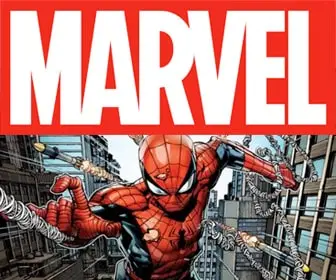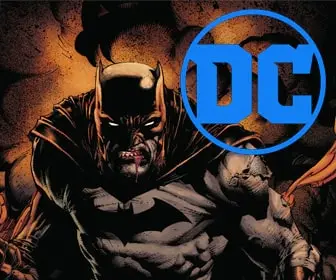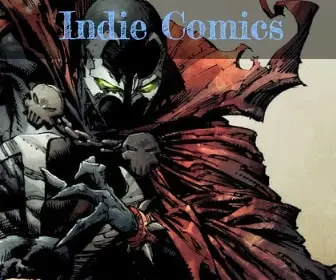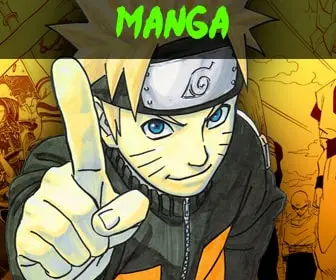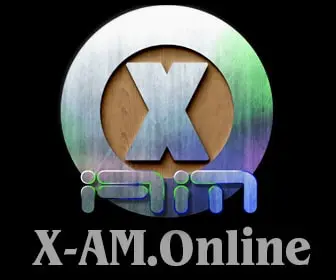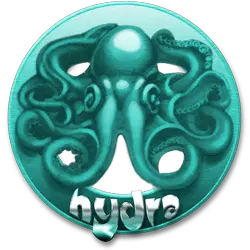
Promoting and Selling Your Comic

The Post-Launch Hustle: Promoting and Selling Your Comic
You did it! You created your comic, poured your passion into every page, and finally launched it into the world. That’s a massive achievement, and you should feel incredibly proud. But here’s the secret no one fully explains: launching your comic is just the beginning. The real adventure – the “post-launch hustle” – starts now.
You wouldn’t bake an amazing cake and then just leave it in the kitchen, hoping someone smells it, right? You share it! Promoting and selling your comic is just like that. You need to actively tell people about your incredible creation and guide them to where they can buy it. This isn’t about bragging; it’s about connecting your art with the readers who will love it.
This blog post will arm you with practical strategies to promote your comic, find your audience, and keep those sales coming in. Get ready to turn your passion project into a successful indie comic enterprise!
Phase 1: Your Digital Presence – Making Your Comic Discoverable
In today’s world, your online presence is your comic’s storefront, marketing billboard, and fan club headquarters all rolled into one. Readers will search for you, so make it easy for them to find your work.
Why this matters: If readers can’t find you online, they can’t buy your comic. A strong digital footprint ensures discoverability, builds credibility, and gives you direct lines of communication with your audience. Neglecting your online presence means your comic gathers digital dust.
How to build it:
- Your Central Hub: A Dedicated Website or Landing Page: This is your comic’s home base. It doesn’t need to be fancy or expensive. A simple site on platforms like WordPress, Squarespace, or even a specialized comic platform like Gumroad or itch.io can work.
- What to include:
- Clear Call to Action: Prominently display where people can buy your comic (e.g., “Buy Now,” “Read Here”).
- About the Comic: A compelling summary, a few preview pages, and character introductions.
- About the Creator(s): Tell your story! People connect with creators.
- News/Updates: A simple blog or news section for announcing new issues, convention appearances, or special offers.
- Contact Information: An email address or contact form.
- Social Media Links: Connect all your platforms.
- What to include:
- Leverage Social Media (Wisely!): You don’t need to be on every platform. Pick one or two where your target audience hangs out and where you enjoy posting.
- Instagram/TikTok (Visual Focus): Perfect for sharing art, character designs, time-lapses of your drawing process, and short, engaging video clips about your comic. Use relevant hashtags like #indiecomics, #webcomic, #comicart, #graphicnovel.
- X (formerly Twitter) (Text & Quick Updates): Great for quick announcements, interacting with other creators, sharing links, and participating in comic-related discussions.
- Facebook (Groups & Community): Join specific comic creator or indie comic fan groups. Share your work there (respectfully, following group rules). Consider creating a Facebook page for your comic.
- Engage, Don’t Just Broadcast: Don’t just post “Buy my comic!” Ask questions, respond to comments, share other creators’ work you admire. Build a community around your comic.
- Build an Email List: Your Direct Line to Fans: This is perhaps the most valuable asset you can build. Social media algorithms change, but your email list stays yours.
- How to start: Use services like Mailchimp, ConvertKit, or Substack.
- Offer Value: Give people a reason to sign up! Offer a free digital wallpaper, a mini-comic prequel, exclusive behind-the-scenes content, or early access to a preview.
- What to send: Announce new issues, sales, convention appearances, major news, or just share interesting updates about your creative process. Keep emails concise and engaging.
Pro-Tip: Make sure your branding (logo, colors, fonts) is consistent across all your platforms. This makes your comic instantly recognizable.
Phase 2: Online Sales & Distribution – Getting Your Comic Into Readers’ Hands
Once you’ve built a buzz, people need a way to buy your comic. Whether you offer digital or physical copies, setting up efficient sales channels is critical.
Why this matters: A convoluted buying process equals lost sales. Make it as easy as possible for someone to click a button and own your comic.
How to make it happen:
- Digital Distribution Platforms:
- Gumroad / Itch.io / Patreon: These are excellent for selling digital copies (PDFs, CBZ files) directly to your audience. They handle payment processing and file delivery, often with low fees.
- GlobalComix / Webtoons / Tapas: If you want to serialize your comic as a webcomic, these platforms offer huge built-in audiences. Some have monetization options (ads, tipping).
- Amazon Kindle Direct Publishing (KDP): You can format your comic as an ebook for Kindle. This offers access to Amazon’s massive readership.
- ComiXology Submit (now integrated with Amazon KDP): This used to be a dedicated platform for indie comics on the major digital comics storefront. While it’s shifted, if you have a completed comic, explore Amazon’s current process for submitting comics to their digital storefront.
- Physical Sales (if applicable):
- Your Own Website Store: If you have a physical inventory, you can set up an e-commerce store using Shopify, Etsy, or even a simple PayPal button on your site. You manage shipping.
- Print-on-Demand (POD) Services: Services like Ka-Blam! or Comix Well Spring allow you to print comics only when an order comes in. This minimizes your upfront cost and inventory risk. You often send them your print-ready files, and they handle printing and sometimes even shipping directly to the customer. This is a game-changer for indie creators.
- Consignment with Local Comic Shops: Approach independent comic book stores in your area. Many are willing to take a few copies of local indie comics on consignment, meaning they only pay you if the comic sells. Offer them a fair percentage of the sale price. Be professional, have a sample copy ready, and present your comic well.
Tip for Pricing: Research what similar indie comics sell for. Consider your production costs, but also what the market will bear. Digital copies are often cheaper than physical ones. Offer bundles or discounts for buying multiple issues.
Phase 3: Real-World Connections – Bringing Your Comic to Life
While digital is essential, don’t underestimate the power of face-to-face interaction. Connecting with readers in person builds stronger relationships and creates memorable experiences.
Why this matters: People buy from people they know, like, and trust. Meeting readers in person, signing comics, and chatting about your work creates loyal fans who become your best promoters.
How to make it happen:
- Attend Local Comic Conventions and Art Fairs:
- Start Small: Don’t aim for Comic-Con immediately. Look for local comic cons, zine fests, indie art markets, or even school craft fairs. Table fees are usually much lower.
- Prepare Your Table: Make your table visually appealing! Display your comic prominently. Have banners, posters, and maybe some cool prints or stickers.
- Engage Visitors: Don’t sit silently behind your table. Stand up, smile, and invite people to look at your work. Practice your “elevator pitch” – a quick, exciting summary of your comic.
- Collect Emails: Have a sign-up sheet for your email list. Offer a small incentive.
- Network: Talk to other artists and writers. You might find collaborators or learn about new opportunities.
- Host Book Signings or Meet-and-Greets: If a local comic shop takes your comic on consignment, ask if you can do a signing event there. Promote it heavily on your social media.
- Local Library or School Events: Offer to do a presentation about making comics for students. This positions you as an expert and introduces your work to a new audience. Bring copies of your comic to sell!
- Giveaways and Contests:
- Online Giveaways: Run a contest on social media where people retweet, share, or tag friends to enter to win a signed copy or a bundle of merchandise.
- In-Person Raffles: At events, offer a raffle for a larger prize, using email sign-ups as entries.
Remember: Always have business cards or postcards with your comic’s website and social media handles readily available.
Phase 4: Continuous Engagement – Keeping the Momentum Going
Launching your comic is a burst of energy, but maintaining momentum requires ongoing effort. The goal is to keep your existing fans engaged and continually attract new ones.
Why this matters: Your comic isn’t a one-and-done deal. To build a sustainable creative career (or just enjoy the ride!), you need to keep your audience interested in what you’re doing next. Consistent engagement builds a loyal readership.
How to sustain it:
- Regular Updates:
- Blog Posts: Share your creative process, behind-the-scenes glimpses, character spotlights, or discuss themes from your comic.
- Social Media: Post consistently, not just when you have something new to sell. Share sketches, answer fan questions, and celebrate milestones.
- Email Newsletters: Send out updates, even if they’re just monthly. Keep your readers informed and feeling like part of your journey.
- Create New Content (Even Small Pieces):
- Mini-Comics/Short Stories: Release short, free digital comics that tie into your main story or explore side characters. This keeps fans engaged between major releases.
- Webcomic Pages: If your comic is a series, release new pages regularly on a webcomic platform. This builds anticipation.
- Art Prints/Merchandise: Offer prints of popular panels or characters, stickers, buttons, or even t-shirts. This provides additional income streams and lets fans show their support.
- Engage with Your Fans:
- Respond to Comments: Acknowledge every comment and message you receive. Make your fans feel seen and appreciated.
- Ask for Feedback: In polls or comments, ask fans what they like, what they want to see next, or ideas for future stories. This makes them feel invested.
- Run Q&As: Host live Q&A sessions on social media or dedicated threads where fans can ask you about your comic or creative process.
- Collaborate with Other Creators: Team up with other indie comic artists or writers. Cross-promote each other’s work. A “creator spotlight” on your blog about another indie comic can introduce your audience to new artists and potentially bring their audience to you.
Crucial Mindset: Think of yourself not just as a comic creator, but as a small business owner. You create the product, but you also market it, sell it, and manage your customer relationships. Embrace this role!
The Journey Continues!
The post-launch hustle is an ongoing effort, a marathon, not a sprint. It requires dedication, consistency, and a willingness to step outside your comfort zone and connect with people. But here’s the amazing part: every single reader you gain, every comic you sell, validates your hard work and fuels your passion.
Don’t get discouraged if sales aren’t huge at first. Building an audience takes time. Focus on creating great content, engaging authentically, and consistently telling the world about your incredible comic. Keep learning, keep experimenting, and keep hustling. Your next reader is out there waiting to discover their new favorite comic – yours!




